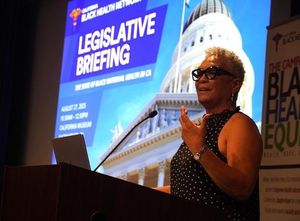Pennsylvania State University (Penn State) is grappling with a tough decision that impacts thousands of students in the upcoming academic years. On Friday, the university's Board of Trustees voted to enact a tuition increase for students at its flagship University Park campus, continuing a trend that many find burdensome but necessary.
The new budget includes a 2% hike for in-state undergraduates and a 4% bump for their out-of-state counterparts. While this news certainly will affect students' wallets, it’s part of a broader effort to stabilize the university’s finances. "We know that these decisions have real impacts on the personal finances of our students and their families," said Neeli Bendapudi, Penn State’s president, in a statement. "However, the efforts we have undertaken to strategically reduce expenses and grow our revenues have placed us on a sustainable financial path."
The primary goal is to bridge a yawning budget gap. The university's budget for 2025-26 is set at approximately $9.9 billion, and officials emphasized the need to balance the books as a top priority.
Historically, Penn State has ranked among the most expensive non-private universities within the Big Ten conference. A substantial part of this issue stems from the lack of adequate state support. Pennsylvania ranks poorly on the national scale when it comes to per-capita funding for higher education. To make up for this, the university has found itself reliant on tuition hikes.
In-state undergraduates at the Commonwealth Campuses will be spared any increase for the third consecutive year, affecting about 43% of the university's resident undergraduates. Out-of-state students across these campuses will see a modest 1% increase. "A critical part of our approach is making a great university even greater," Bendapudi noted.
However, pockets of resistance have formed within the Board of Trustees. Trustees Ted Brown, Barry Fenchak, Anthony Lubrano, and Matt McGloin have consistently voiced their opposition to the increases. "We froze tuition at UP three times before," Brown commented. "I’d like to see us do it a fourth time." McGloin echoed this sentiment, emphasizing the repercussions of such decisions on local students.
The revenues from these hikes will primarily go towards a 3% salary increase for faculty and staff, as well as funding for new overtime regulations and faculty promotions. The budget also includes a $68 million allocation for a new academic building at Penn State Abington and a $5 million increase in financial aid, raising the university’s total investment in aid to over $455 million.
While tuition and fees rise, the university is also increasing room and board rates. For the 2025-26 academic year, these rates will spike 3.21% at University Park, marking one of the lowest increases since the COVID-19 pandemic. The standard housing and food rate will jump by $216 per semester for a total of $13,880 annually. Student fees at University Park will increase by 8.3% to $315.
Despite the financial strain on students and families, the administration insists these measures are unavoidable. Sara Thorndike, Penn State's senior vice president for finance and business, noted the comprehensive efforts made to minimize cost hikes while still maintaining high standards. "Penn State is committed to controlling all facets of a student’s cost of attendance," she said.
This latest budget approval follows closely on the heels of the state's decision to flat-fund Penn State, along with Temple University and the University of Pittsburgh. These institutions will now be subject to performance-based funding, a move that has garnered mixed reviews but aims to ensure accountability.
Thorndike pointed out the stagnation in state appropriations since 2019, with Pennsylvania spending significantly less per student compared to other states. "We’re still at the bottom of the list, unfortunately," she added. Interestingly, the increase will still leave Penn State’s room and board costs below the Big Ten average of $14,993.
Many trustees have expressed their frustrations but also acknowledged the necessity of these measures to maintain the university's financial health. The university has implemented various cost-saving measures over the past few years, including a hiring freeze and buyouts, all aimed at creating a balanced budget. "Our focus is on preparing Penn State for the future," Bendapudi said, summarizing the steps taken to reduce expenses while still offering a world-class educational experience.
Students, however, face a steeper financial hill to climb. A typical in-state undergraduate at University Park will see their annual tuition rise $402 to a total of $20,468. Out-of-state students will be hit harder, with an increase of $1,648, bringing their yearly tuition to $42,860. These numbers, according to Thorndike, help cover the rising costs of operating expenses and food.
As Penn State navigates this challenging landscape, the question remains: How will the balance between accessibility and financial sustainability be struck? Only time will tell if these measures can truly set the university on a course for a bright future while keeping the doors of opportunity wide open for all students.



